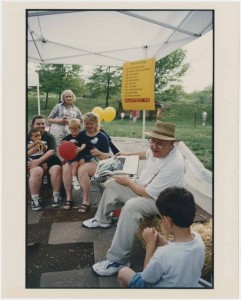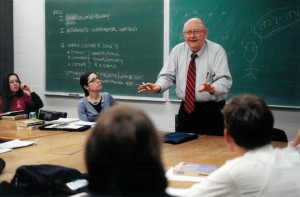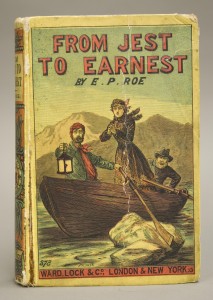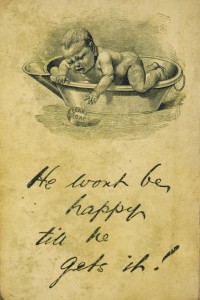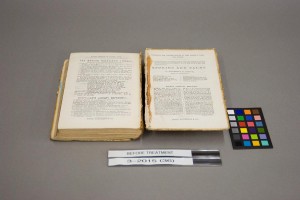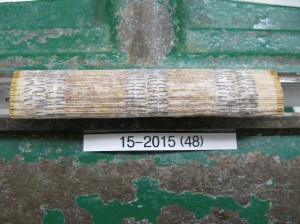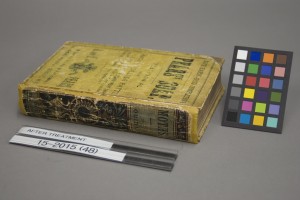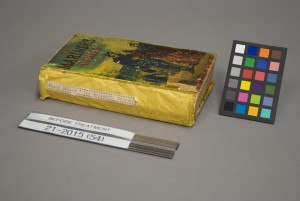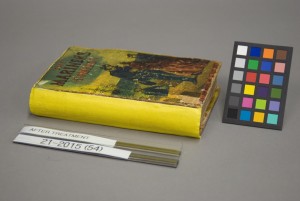Robert E. Hemenway, August 1941- July 2015
August 10th, 2015Chosen as the 16th Chancellor of the University of Kansas in 1995, Robert Hemenway passed away July 31 at the age of 73. During his years as Chancellor he focused on the improvement of the student experience, the achievement of a National Cancer Institute designation for the KU Cancer Center, and setting record-high fundraising levels that benefited both the University and the state of Kansas. Upon retirement in 2009, his legacy was honored by the establishment of the Dole Institute Robert Hemenway Award for Outstanding Public Service, and by the naming of the Robert E. Hemenway Life Sciences Innovation Center, a research facility on the KU Medical Center campus.
Chancellor Hemenway reading a story at Mayfest, Potter Lake, 1998.
Photograph by KU University Relations. University Archives Photos.
Call Number: RG 2/19 1998 Prints: Chancellors: Hemenway (Photos).
Click image to enlarge.
Zach Hemenway recalled his father’s passion for education saying, “He really instilled that in all of us—the value of learning and being curious and challenging yourself.” That passion made Hemenway a beloved Chancellor and colleague. Current Chancellor Bernadette Gray-Little issued a heartfelt message about the Chancellor who always preferred to be called “Bob.”
Throughout his tenure Chancellor Hemenway taught English and American Studies courses.
He is pictured as a guest speaker in “Feminist Theory in Anthropology.”
Photograph by KU University Relations. University Archives Photos.
Call Number: RG 2/19 2001 Prints: Chancellors: Hemenway (Photos).
Click image to enlarge.
You can learn much more about Chancellor Hemenway at Spencer Research Library. As the repository of the University’s official documents, University Archives houses the papers and correspondence of all KU chancellors. Please note that the records of the sitting chancellor as well as the preceding chancellor require permission from the Office of the Chancellor for access. Spencer is also home to Dr. Hemenway’s personal papers, which include administrative documents from previous posts at the University of Kentucky, the University of Wyoming, and the University of Oklahoma; research, teaching materials, and course notes on American literature, particularly African American literature; research related to his literary biography of Zora Neale Hurston, and his dissertation on Charles Brockden Brown.
JoJo Palko
KU 150 Research Archivist
University Archives

